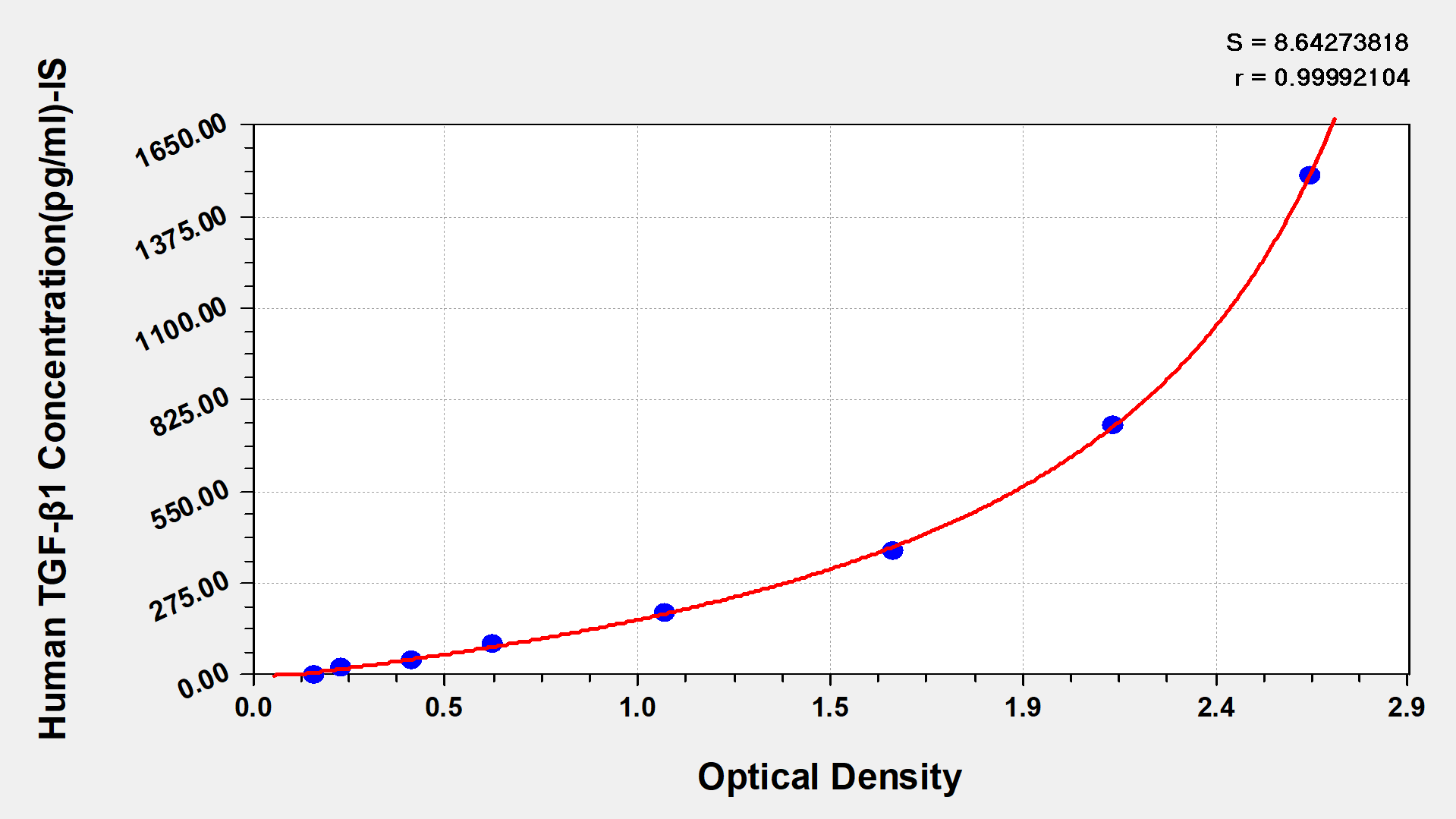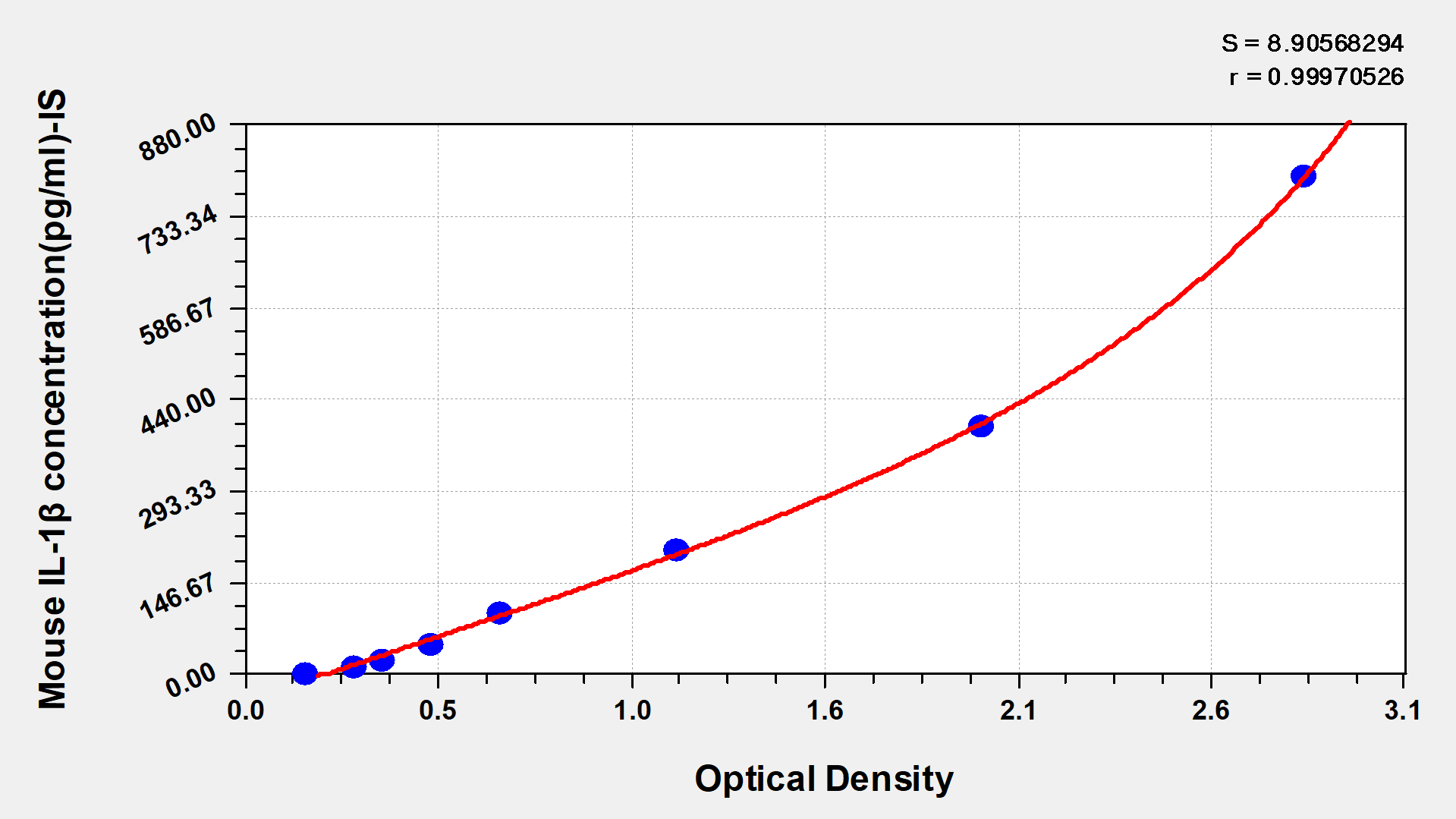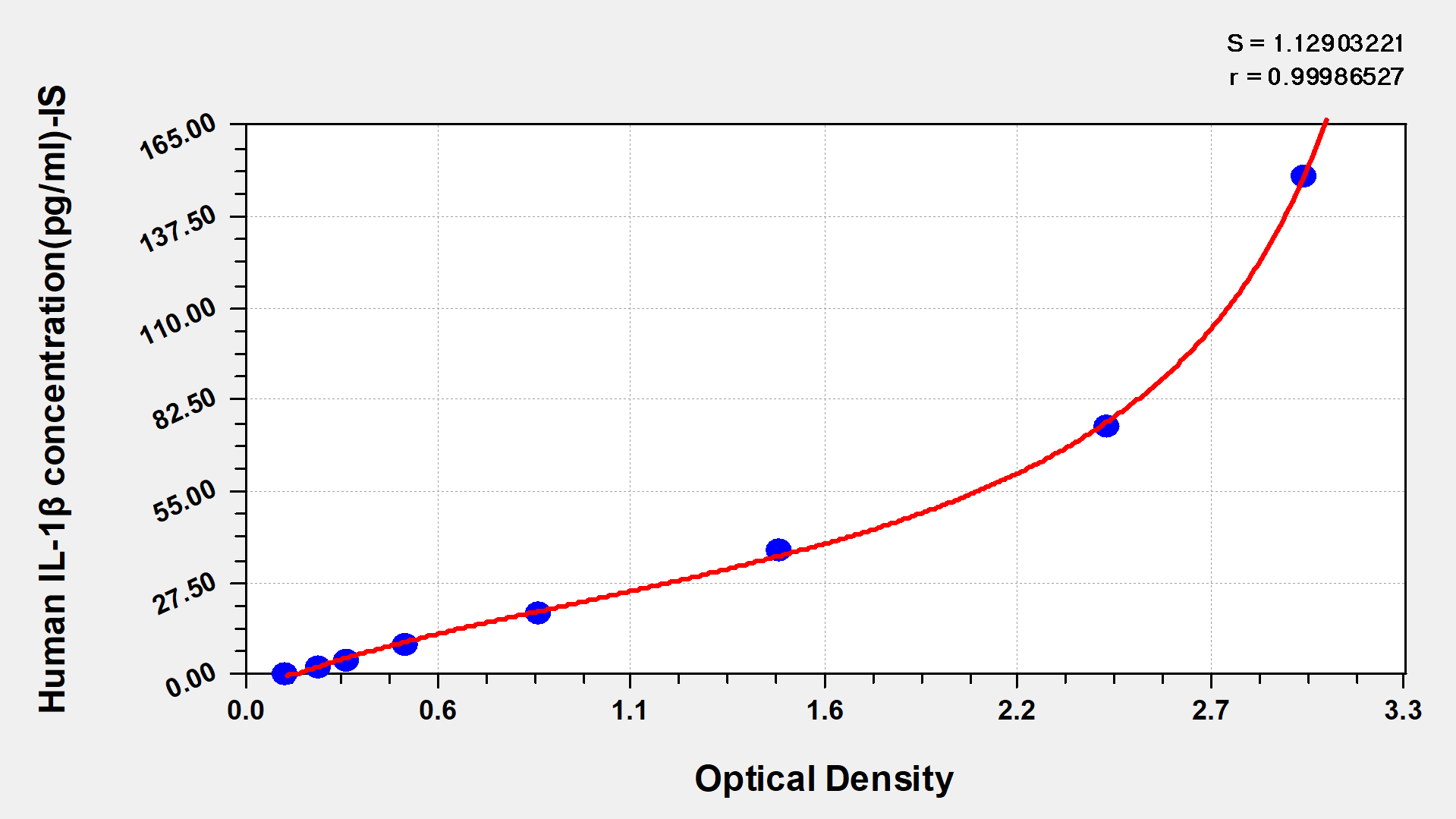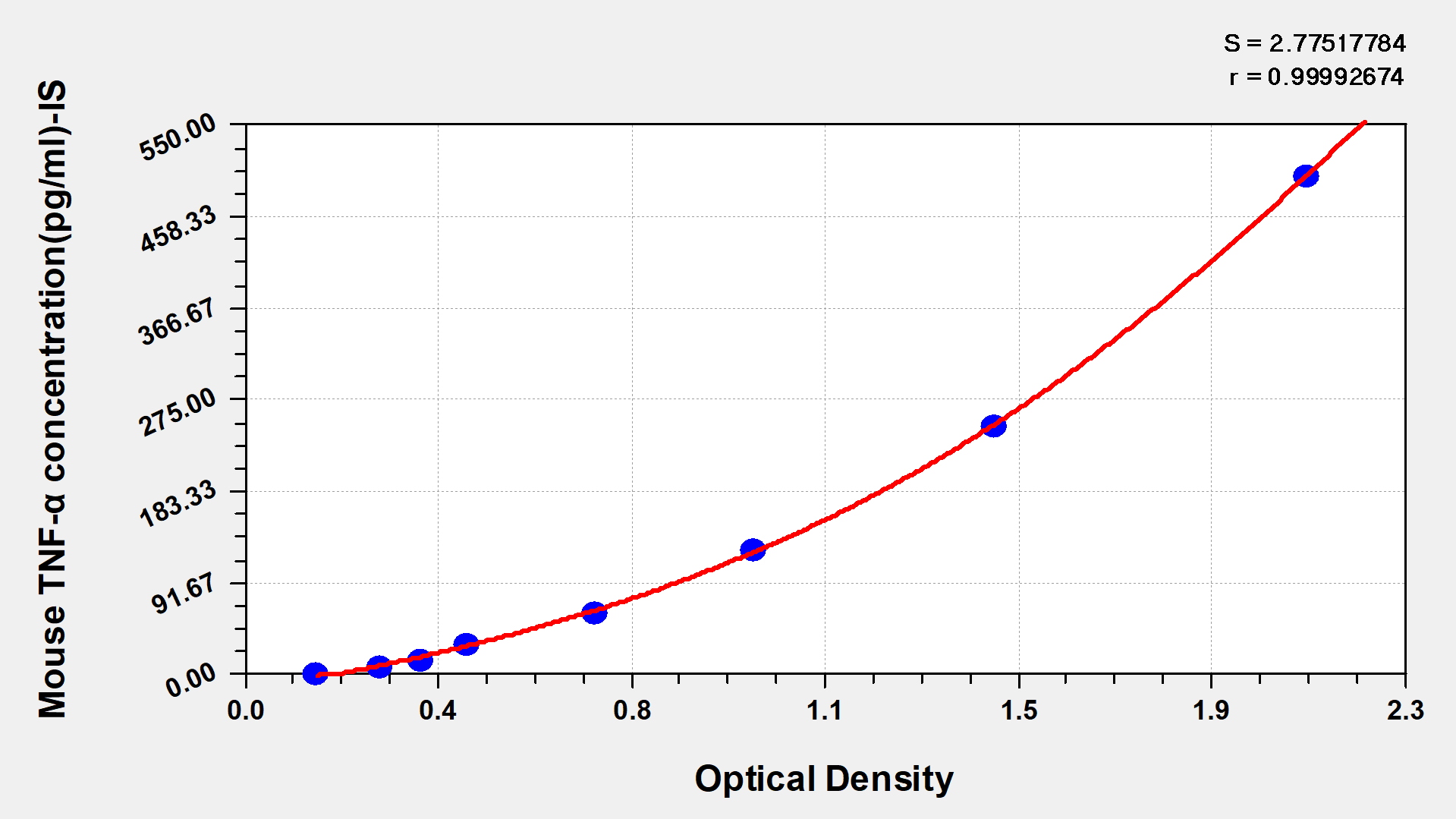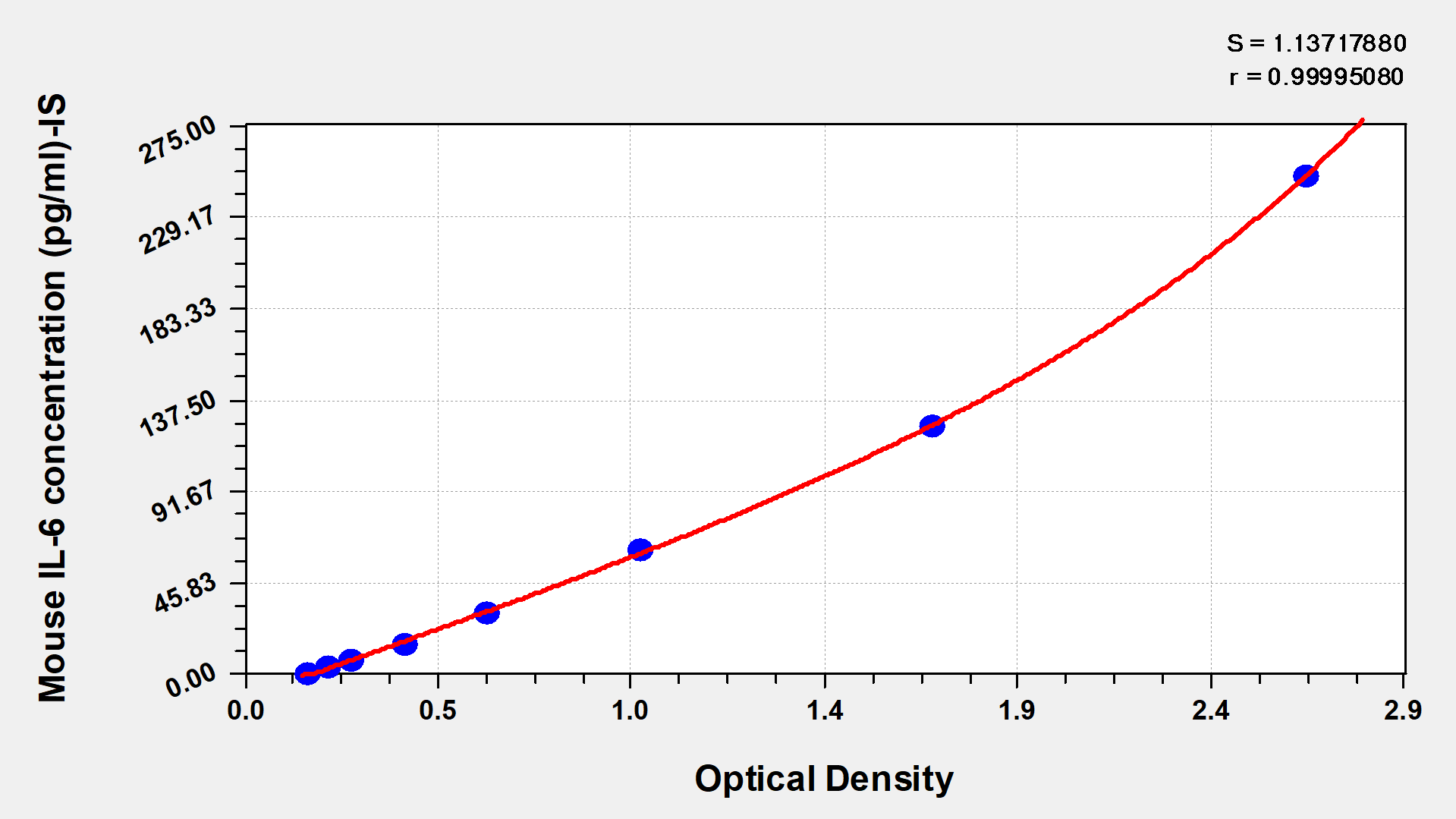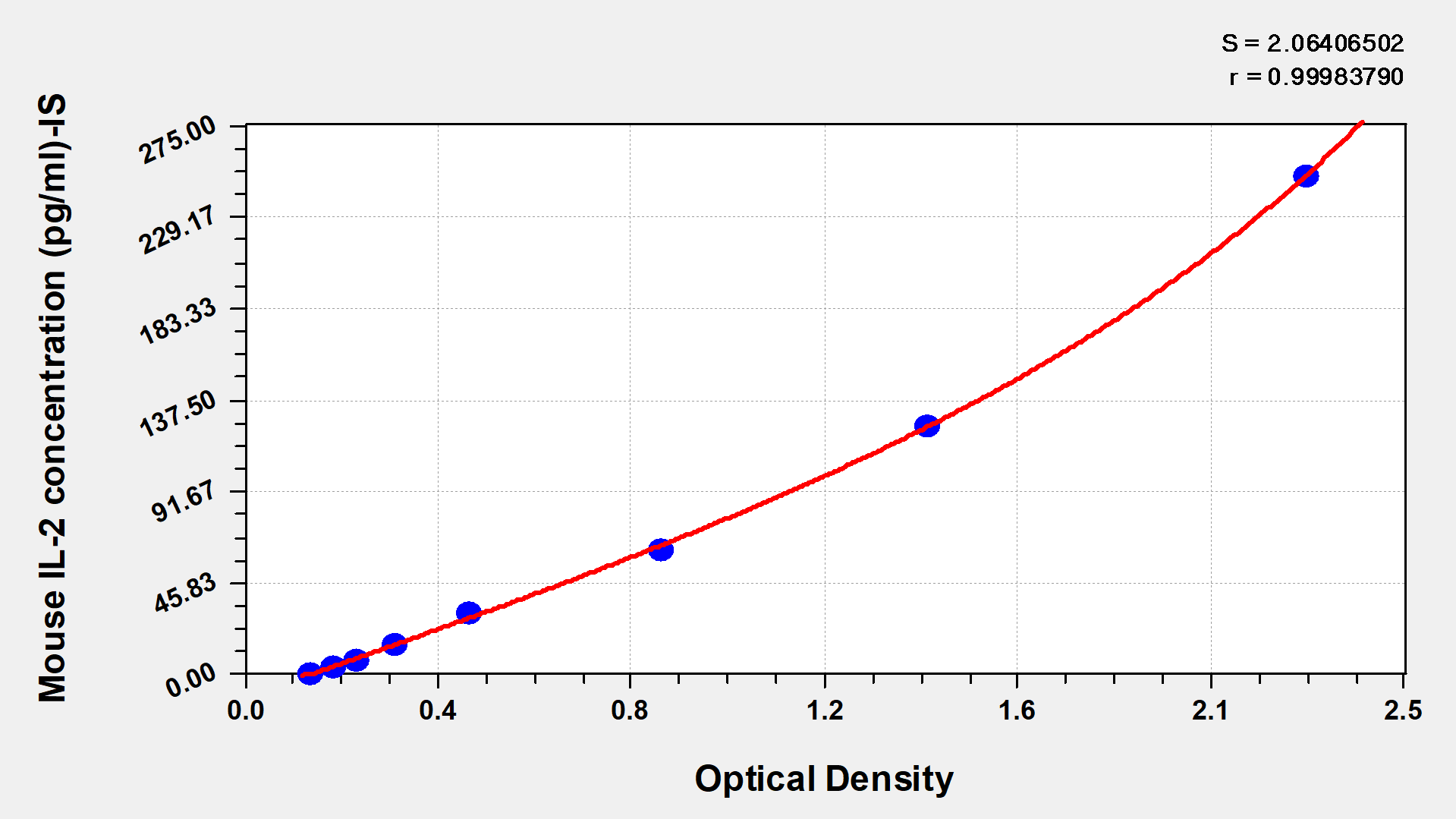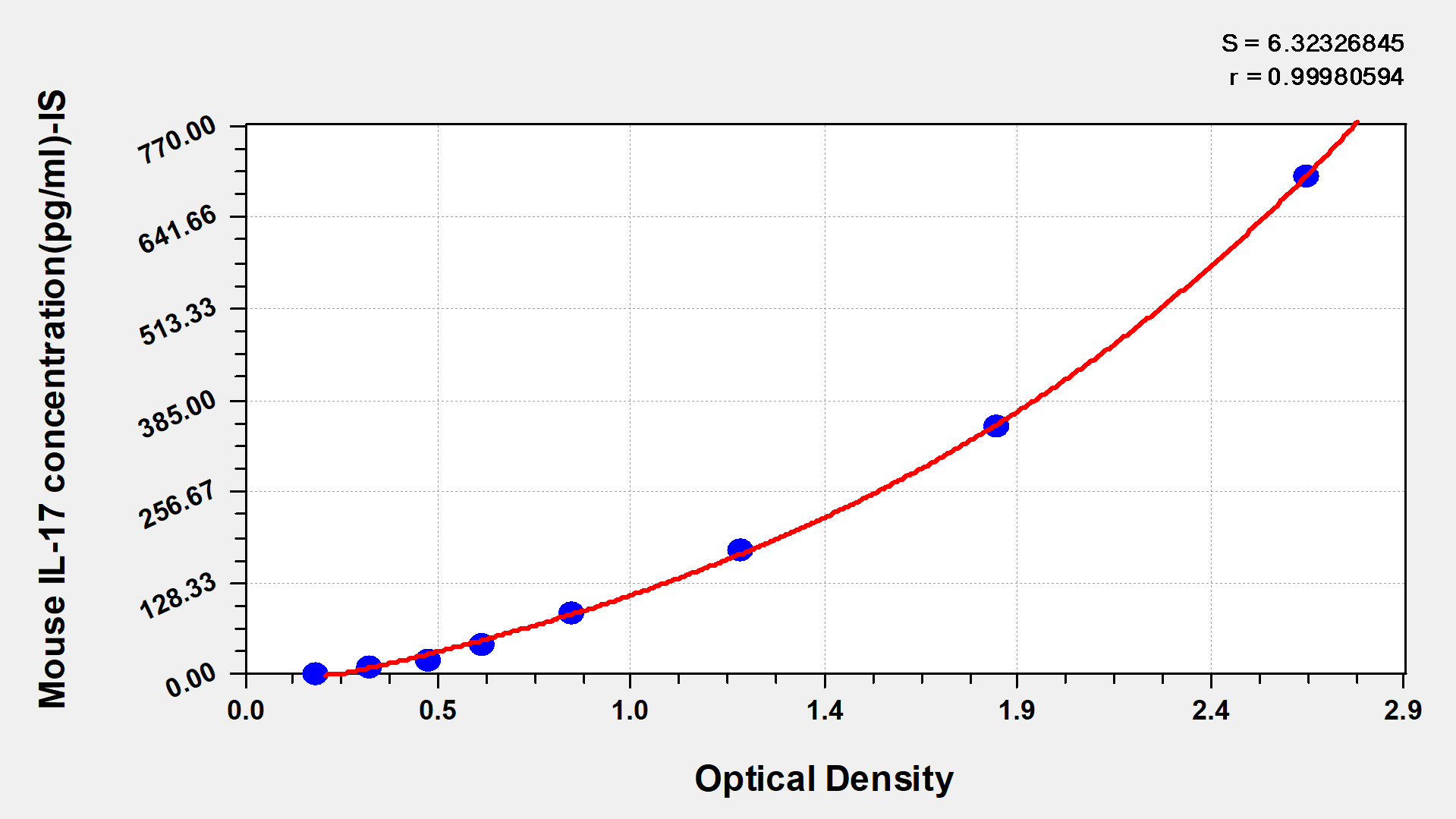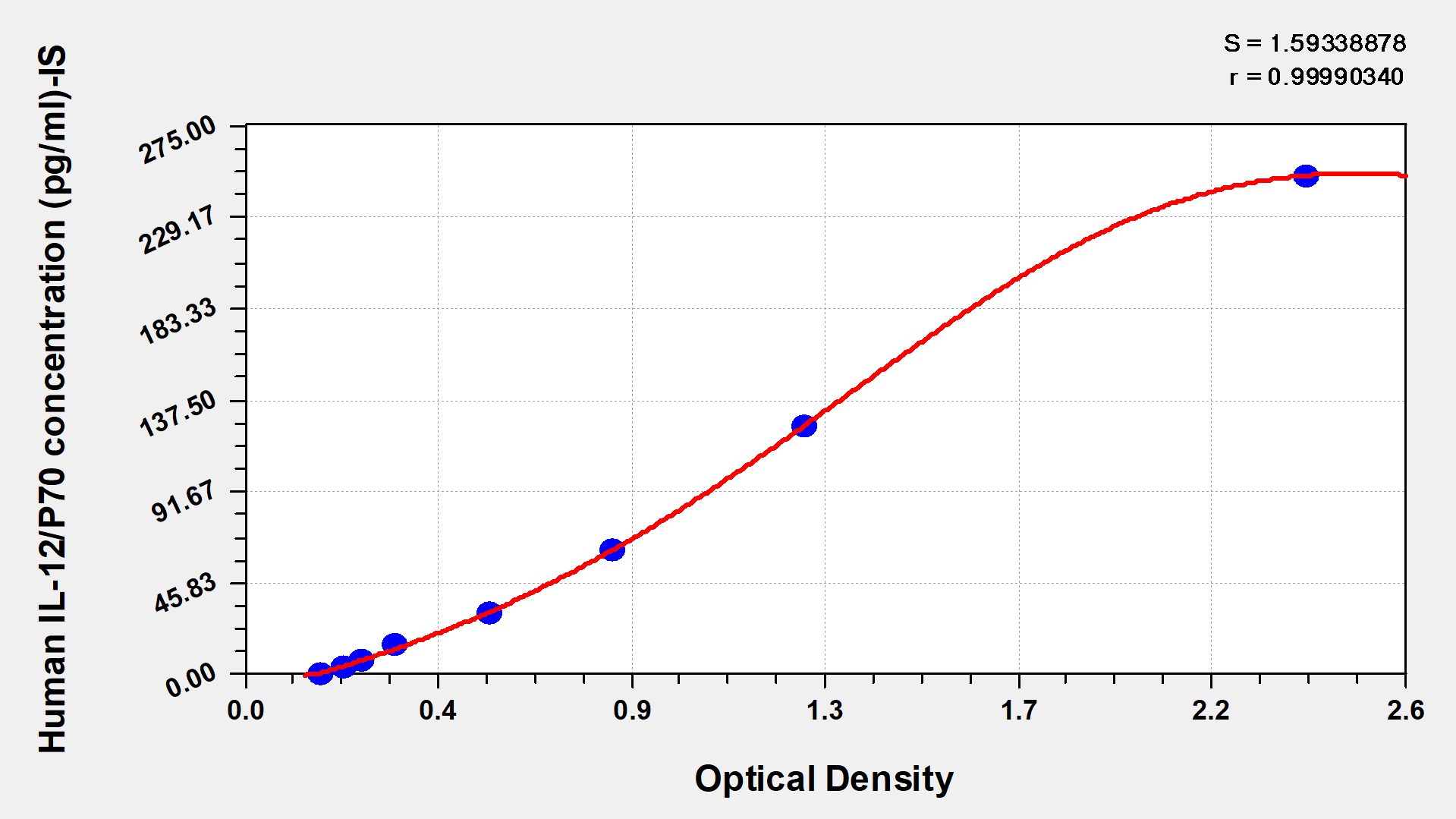-
中文名稱:小鼠DJ-1蛋白(PARK7)酶聯免疫試劑盒
-
貨號:CSB-EL017454MO
-
規格:96T/48T
-
價格:¥3600/¥2500
-
其他:
產品詳情
-
產品描述:小鼠DJ-1蛋白(PARK7)酶聯免疫試劑盒(CSB-EL017454MO)為雙抗夾心法ELISA試劑盒,定量檢測血清、血漿、組織勻漿、細胞裂解物樣本中的PARK7含量。PARK7 是一個重要靶點。它在帕金森病等神經退行性疾病中扮演關鍵角色,其編碼的蛋白具有抗氧化、分子伴侶等功能。研究圍繞其在神經細胞內的作用機制,如調節氧化應激、蛋白質穩態等展開,有望為相關疾病治療提供新方向。試劑盒檢測范圍為62.5 pg/mL-4000 pg/mL,適用于科研領域中對小鼠模型或細胞實驗中DJ-1蛋白表達水平的動態監測,例如神經退行性疾病機制研究、氧化應激相關信號通路探索、基因敲除/過表達模型的驗證等,為體外實驗和動物實驗提供可靠的蛋白定量檢測方案。本品僅用于科研,不用于臨床診斷,產品具體參數及操作步驟詳見產品說明書。
-
別名:Park7 ELISA Kit; Protein/nucleic acid deglycase DJ-1 ELISA Kit; EC 3.1.2.- ELISA Kit; EC 3.5.1.- ELISA Kit; EC 3.5.1.124 ELISA Kit; Maillard deglycase ELISA Kit; Parkinson disease protein 7 homolog ELISA Kit; Parkinsonism-associated deglycase ELISA Kit; Protein DJ-1 ELISA Kit; DJ-1 ELISA Kit
-
縮寫:
-
Uniprot No.:
-
種屬:Mus musculus (Mouse)
-
樣本類型:serum, plasma, tissue homogenates, cell lysates
-
檢測范圍:62.5 pg/mL-4000 pg/mL
-
靈敏度:15.6 pg/mL
-
反應時間:1-5h
-
樣本體積:50-100ul
-
檢測波長:450 nm
-
研究領域:Cancer
-
測定原理:quantitative
-
測定方法:Sandwich
-
精密度:
Intra-assay Precision (Precision within an assay): CV%<8% Three samples of known concentration were tested twenty times on one plate to assess. Inter-assay Precision (Precision between assays): CV%<10% Three samples of known concentration were tested in twenty assays to assess. -
線性度:
To assess the linearity of the assay, samples were spiked with high concentrations of mouse PARK7 in various matrices and diluted with the Sample Diluent to produce samples with values within the dynamic range of the assay. Sample Serum(n=4) 1:1 Average % 93 Range % 86-102 1:2 Average % 96 Range % 91-101 1:4 Average % 95 Range % 91-99 1:8 Average % 96 Range % 92-100 -
回收率:
The recovery of mouse PARK7 spiked to levels throughout the range of the assay in various matrices was evaluated. Samples were diluted prior to assay as directed in the Sample Preparation section. Sample Type Average % Recovery Range Serum (n=5) 97 93-102 EDTA plasma (n=4) 92 88-97 -
標準曲線:
These standard curves are provided for demonstration only. A standard curve should be generated for each set of samples assayed. 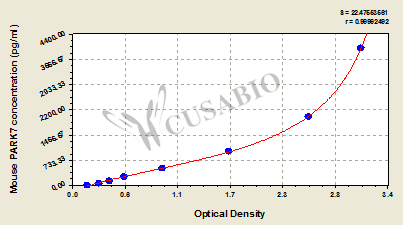
pg/ml OD1 OD2 Average Corrected 4000 3.057 3.104 3.081 2.911 2000 2.577 2.472 2.525 2.355 1000 1.669 1.683 1.676 1.506 500 0.942 1.000 0.971 0.801 250 0.555 0.575 0.565 0.395 125 0.390 0.415 0.403 0.233 62.5 0.283 0.302 0.293 0.123 0 0.169 0.171 0.170 -
數據處理:
-
貨期:3-5 working days
引用文獻
- Neuroprotection of Kolaviron by Regulation of Nuclear Factor Erythroid 2-related Factor 2 in 1-Methyl-4-phenyl-1,2,3,6-tetrahydropyridine Mice Model of Parkinson Disease Ifeoluwa Awogbindin,The American Journal of Biopharmacy and Pharmaceutical Sciences,2021
- Dj1 deficiency protects against atherosclerosis with anti-inflammatory response in macrophages Jiaqi Yang,Scientific Reports,2021
相關產品
靶點詳情
-
功能:Multifunctional protein with controversial molecular function which plays an important role in cell protection against oxidative stress and cell death acting as oxidative stress sensor and redox-sensitive chaperone and protease. It is involved in neuroprotective mechanisms like the stabilization of NFE2L2 and PINK1 proteins, male fertility as a positive regulator of androgen signaling pathway as well as cell growth and transformation through, for instance, the modulation of NF-kappa-B signaling pathway. Has been described as a protein and nucleotide deglycase that catalyzes the deglycation of the Maillard adducts formed between amino groups of proteins or nucleotides and reactive carbonyl groups of glyoxals. But this function is rebuted by other works. As a protein deglycase, repairs methylglyoxal- and glyoxal-glycated proteins, and releases repaired proteins and lactate or glycolate, respectively. Deglycates cysteine, arginine and lysine residues in proteins, and thus reactivates these proteins by reversing glycation by glyoxals. Acts on early glycation intermediates (hemithioacetals and aminocarbinols), preventing the formation of advanced glycation endproducts (AGE) that cause irreversible damage. Also functions as a nucleotide deglycase able to repair glycated guanine in the free nucleotide pool (GTP, GDP, GMP, dGTP) and in DNA and RNA. Is thus involved in a major nucleotide repair system named guanine glycation repair (GG repair), dedicated to reversing methylglyoxal and glyoxal damage via nucleotide sanitization and direct nucleic acid repair. Protects histones from adduction by methylglyoxal, controls the levels of methylglyoxal-derived argininine modifications on chromatin. Able to remove the glycations and restore histone 3, histone glycation disrupts both local and global chromatin architecture by altering histone-DNA interactions as well as histone acetylation and ubiquitination levels. Displays a very low glyoxalase activity that may reflect its deglycase activity. Eliminates hydrogen peroxide and protects cells against hydrogen peroxide-induced cell death. Required for correct mitochondrial morphology and function as well as for autophagy of dysfunctional mitochondria. Plays a role in regulating expression or stability of the mitochondrial uncoupling proteins SLC25A14 and SLC25A27 in dopaminergic neurons of the substantia nigra pars compacta and attenuates the oxidative stress induced by calcium entry into the neurons via L-type channels during pacemaking. Regulates astrocyte inflammatory responses, may modulate lipid rafts-dependent endocytosis in astrocytes and neuronal cells. In pancreatic islets, involved in the maintenance of mitochondrial reactive oxygen species (ROS) levels and glucose homeostasis in an age- and diet dependent manner. Protects pancreatic beta cells from cell death induced by inflammatory and cytotoxic setting. Binds to a number of mRNAs containing multiple copies of GG or CC motifs and partially inhibits their translation but dissociates following oxidative stress. Metal-binding protein able to bind copper as well as toxic mercury ions, enhances the cell protection mechanism against induced metal toxicity. In macrophages, interacts with the NADPH oxidase subunit NCF1 to direct NADPH oxidase-dependent ROS production, and protects against sepsis.
-
基因功能參考文獻:
- DJ-1 protein concentration was significantly increased during the clinical phase in cerebrospinal fluid of sporadic Creutzfeldt-Jakob disease patients. PMID: 27975168
- The molecular mechanism linking miR-221 to genetic forms of Parkinson's disease (PD) has not been studied. Consistent with the microarray data, miR-221 expression is also decreased in DJ-1(-/-) mouse brains. Re-introduction of wild-type DJ-1, but not its PD-linked pathogenic M26I mutant, restores miR-221 expression. PMID: 30107296
- the results of this study suggest that male DJ-1 KO mice exhibit defects in brown adipose tissue (BAT) activity but do not gain more weight, revealing that BAT activity is not necessarily required for predisposing DJ-1 KO mice to obesity. Therefore, therapeutic targeting of DJ-1 in BAT could provide novel insights into the treatment of obesity. PMID: 30142366
- Results suggest that protein deglycase DJ-1 (DJ-1) plays a role in bone homeostasis in normal physiology and in bone-associated pathology by negatively regulating osteoclastogenesis. PMID: 29142196
- Silencing the DJ-1 gene uncovers a link between mitochondria-associated Parkinson's disease and mitotic pressure. PMID: 29097687
- Low DJ-1 expression impairs synaptic vesicle endocytosis and reavailability at nerve terminals. PMID: 29386384
- DJ-1 deficiency causes defects in astrocyte-mediated repair of brain damage. PMID: 29105838
- In cultured neurons and forebrain samples from Dj1(-/-) animals, there was chloride damage and a profound structural remodeling of the mitochondrial respiratory chain. PMID: 28408307
- DJ-1 has a role in glutamate uptake into astrocytes by regulating flotillin-1 and caveolin-1 expression PMID: 27346864
- Network analysis reveals DJ-1/LDLR as common host proteins modulating pathogenesis of neurotropic viruses. PMID: 27581498
- Induction of DJ-1 may serve as a novel regulator for hepatocellular carcinoma cell proliferation and HCC development possibly through enhanced MAPK signaling and inflammation. PMID: 28036277
- chaperone-mediated autophagy protects mitochondrial function by degrading nonfunctional PARK7 and maintaining its homeostasis, and dysregulation of this pathway may contribute to the neuronal stress and death in Parkinson disease pathogenesis PMID: 27171370
- Knockdown of DJ-1 attenuates Nurr1 activity. PMID: 26873851
- These results demonstrate that DJ-1 KO mice display progressive signs of retinal/RPE degeneration in association with higher levels of oxidative stress markers. Collectively this analysis indicates that DJ-1 plays an important role in protecting photoreceptors and RPE from oxidative damage during aging PMID: 28088625
- DJ-1 activates autophagy to alleviate cardiac hypertrophy. PMID: 28941803
- These results indicate that up-regulation of GH in the lungs of DJ-1 KO mice may enhance the malignancy of B16F10 cells and nodule formation in pulmonary metastasis of melanoma. PMID: 27825319
- DJ-1 deficiency negatively regulates liver progenitor cells (LPC) proliferation by impairing the formation of LPC-associated fibrosis and inflammatory niches. PMID: 27277679
- regulation of reactive oxygen species (ROS) and of the antioxidant protein DJ-1 (PARK-7), which increases with cancer progression and acts to lessen oxidative damage to malignant cells, in relationship with systemic mastocytosis severity, was examined. PMID: 27611333
- Our data strengthen previous findings regarding DJ-1 diverse pathways and indicate that DJ-1 is part of a concerted and complex cellular response to OS PMID: 27109140
- Our data demonstrates that the activation of DJ-1 in response to myocardial I/R injury protects the heart by regulating the SUMOylation status of Drp1 and attenuating excessive mitochondrial fission. PMID: 27108530
- DJ-1(-/-) astrocytes may provide decreased neuroprotection to surrounding neurons due to alterations in pro-inflammatory mediator expression PMID: 26691871
- Loss of DJ-1 impairs antioxidant response by altered glutamine and serine metabolism. PMID: 26836693
- To verify our finding, we provide evidence that the protein expression of Parkinson protein 7, including new protein synthesis, is sensitive to mTORC1 inhibition PMID: 26419955
- this study identified the anti-oxidant protein DJ-1 as being capable of protecting pancreatic islet cells from cell death induced by an inflammatory and cytotoxic setting. PMID: 26422139
- In skeletal muscle cells, DJ-1 contributes to undernutrition-induced atrophy via MAPKs/ubiquitin ligase pathway. PMID: 26408915
- Deficiency of DJ-1 exerts a stimulatory effect on vascular smooth muscle cell migration. PMID: 25978603
- DJ1 maintains cellular metabolic homeostasis via modulating ROS levels in murine skeletal muscles, revealing a role of DJ1 in maintaining efficient fuel utilization. PMID: 26077864
- DJ-1 physically binds the 20S proteasome and inhibits its activity. following oxidative stress, DJ-1 is involved in the Nrf2-dependent oxidative stress response that leads to the upregulation of both the 20S proteasome and its regulator, NQO1. PMID: 25833141
- The Park7 has a protective role against sepsis by controlling macrophage activation, NADPH oxidase activation and inflammation responses. PMID: 26021615
- in addition to detailing the visual defects that occur as a result of the absence of DJ-1, our data is also relevant to AMD pathogenesis. PMID: 26215528
- DJ-1 reinforces the PI3K/AKT survival pathway and inhibits autophagy, probably by a mechanism independent from mTOR. PMID: 26222260
- High DJ-1 contributes to adipogenesis and obesity-induced inflammation. PMID: 24925581
- the P158Delta point mutation may contribute to neurodegeneration by protein destabilization and hence loss of DJ-1 function. PMID: 23241025
- DJ-1 appears to have a protective role against dopaminergic degeneration triggered by alpha-syn or 6-OHDA, reinforcing the possible therapeutic importance of this protein in Parkinson's disease. PMID: 25500798
- results indicate that DJ1 regulates cell metabolism and proliferation through Pink1 PMID: 25670069
- Thus, our results suggest that myricitrin alleviates MPP(+)-induced mitochondrial dysfunction and increases cell viability via DJ-1. PMID: 25623535
- Data suggest that Parkinson's disease protein DJ-1 is a common physiological sensor involved in both nutrition-induced effects and neurodegenerative disease states. PMID: 24646099
- results suggest that DJ-1 protein is involved in SDF-1-induced CD3+ T cell migration via the overexpression of the CXCR4 receptor and that DJ-1 might act as an inhibitory regulator in vascular remodeling such as neointima formation PMID: 24953490
- DJ-1 protein regulates the expression of renal PRR through H2O2-mediated epigenetic modification. PMID: 25463323
- Brains from DJ-1(-/-) mice showed an increase in mitochondrial Trx activity, GSH and GSSG levels and mitochondrial glutaredoxin (GRX) activity. PMID: 24936441
- The purpose of this study was to investigate the effects of PARK7 in muscle growth and protein accretion in response to IGF1. PMID: 24637782
- DJ-1/park7 protein may be implicated in the regulation of vascular contractility and blood pressure PMID: 24323315
- DJ-1 knockout mice were more susceptible to cell death from in vivo ischemic reperfusion injury with larger myocardial infarct sizes and resistance to cardioprotection by ischemic preconditioning. PMID: 24577080
- oxidative stress-mediated intracellular trafficking of DJ-1, mediated by dynamic DJ-1 dimeric/monomeric cycling, is implicated in Parkinson disease pathogenesis. PMID: 24912681
- is thought to be an oxidative sensor that protects cells from oxidative insult. PMID: 24269020
- These observations suggest the relevance of DJ-1 oxidation to homeostasis in multiple brain regions, including neuromelanin-containing neurons of the substantia nigra PMID: 24918637
- Data show the transcriptional activation of the cholecystokinin gene by DJ-1 through interaction of DJ-1 with RREB1 and the effect of DJ-1 on the cholecystokinin level. PMID: 24348900
- Results show DJ-1 protein associated with lipid rafts. This novel function of DJ-1 in lipid rafts, may contribute the pathogenesis of Parkinson's Disease. PMID: 23847046
- the mortalin/DJ-1 complex guards against mitochondrial oxidative stress and is indispensable for the maintenance of hematopoietic stem cells PMID: 24243970
- The Parkinson disease-related protein DJ-1 counteracts mitochondrial impairment induced by the tumour suppressor protein p53 by enhancing endoplasmic reticulum-mitochondria tethering. PMID: 23418303
顯示更多
收起更多
-
亞細胞定位:Cell membrane; Lipid-anchor. Cytoplasm. Membrane raft. Nucleus. Mitochondrion. Endoplasmic reticulum.
-
蛋白家族:Peptidase C56 family
-
組織特異性:Expressed in erythroblasts and in mature red blood cells from peripheral blood (at protein level). In pancreas, expression is higher in islets than surrounding exocrine tissues.
-
數據庫鏈接:
Most popular with customers
-
Human Transforming Growth factor β1,TGF-β1 ELISA kit
Detect Range: 23.5 pg/ml-1500 pg/ml
Sensitivity: 5.8 pg/ml
-
-
-
Mouse Tumor necrosis factor α,TNF-α ELISA Kit
Detect Range: 7.8 pg/ml-500 pg/ml
Sensitivity: 1.95 pg/ml
-
-
-
-



